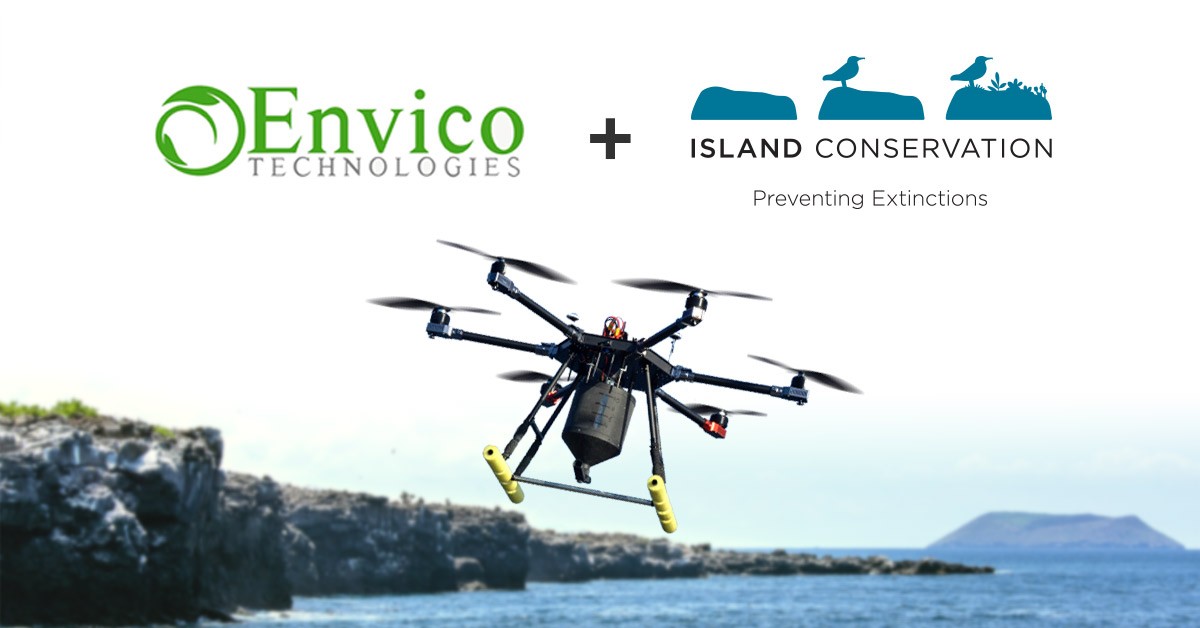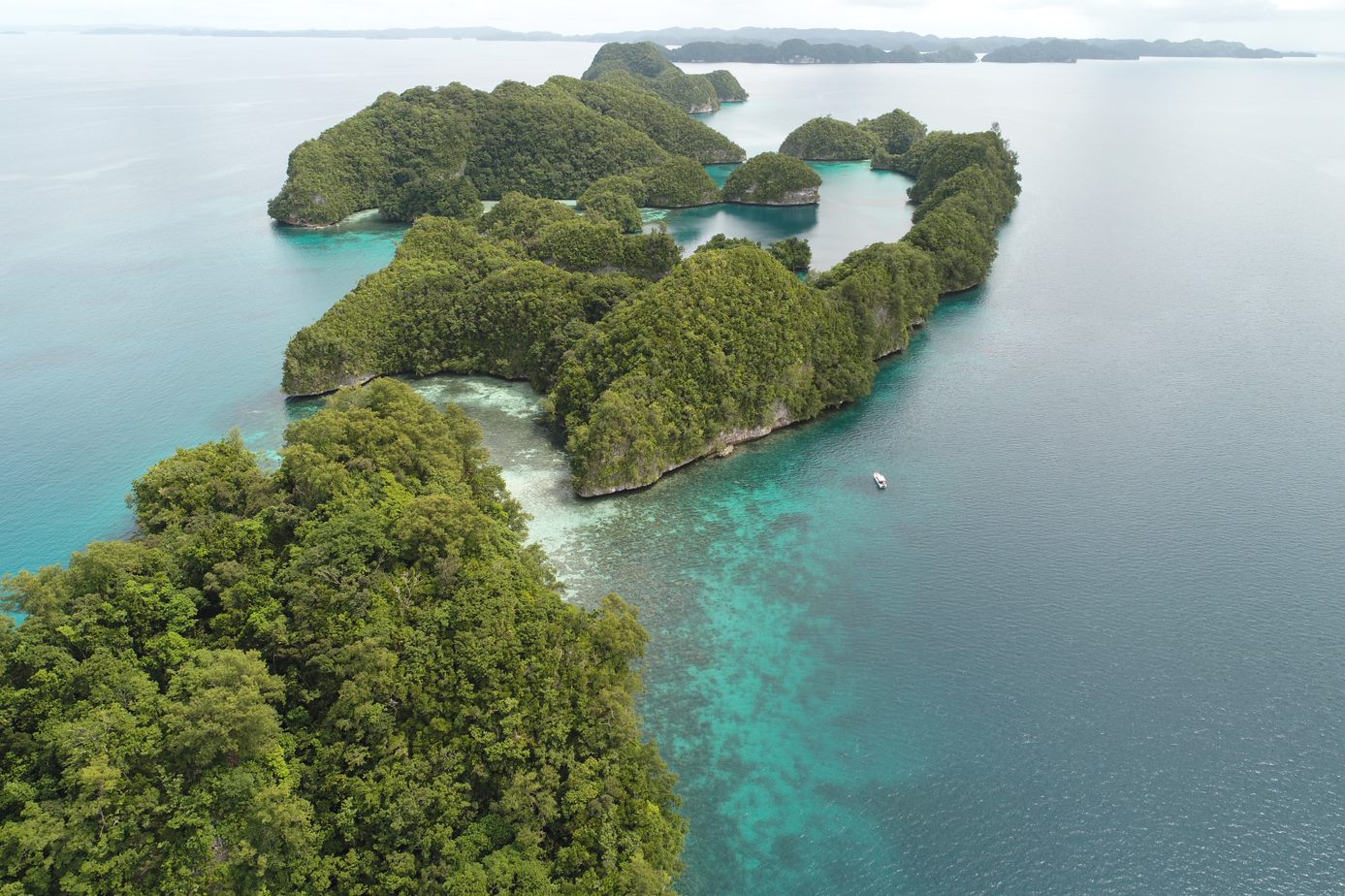March 11, 2025
Press Release: New eDNA Tool Can Detect Invasive Rodents Within an Hour
New environmental DNA technology can help protect vulnerable island ecosystems from destructive invasive species.
We use cookies to help you navigate efficiently and perform certain functions. You will find detailed information about all cookies under each consent category below.
The cookies that are categorized as "Necessary" are stored on your browser as they are essential for enabling the basic functionalities of the site. ...
Necessary cookies are required to enable the basic features of this site, such as providing secure log-in or adjusting your consent preferences. These cookies do not store any personally identifiable data.
Functional cookies help perform certain functionalities like sharing the content of the website on social media platforms, collecting feedback, and other third-party features.
Analytical cookies are used to understand how visitors interact with the website. These cookies help provide information on metrics such as the number of visitors, bounce rate, traffic source, etc.
Performance cookies are used to understand and analyze the key performance indexes of the website which helps in delivering a better user experience for the visitors.
Advertisement cookies are used to provide visitors with customized advertisements based on the pages you visited previously and to analyze the effectiveness of the ad campaigns.

Global nonprofit Island Conservation has announced an official partnership with award-winning environmental company Envico Technologies to adapt, modify and perfect drone models used in island restoration projects.
Island Conservation prevents extinctions by removing invasive species located on remote islands that frequently comprise impassable foliage, prohibitive weather and treacherous terrain. These physical limitations present significant challenges to conservation efforts, including restricting the distribution of bait, collecting data, as well as locating and tracking invasive species. Island Conservation has pioneered the use of drone technology alongside Envico since 2019, and a new formal partnership promises to scale these advances and widen their application for global conservation efforts.
Cutting-edge, heavy-lift drone platforms have proven to be extremely efficient tools for remote island conservation baiting campaigns. Through implementation on Island Conservation projects in Palau and French Polynesia, Envico aims to prove the field-readiness of this novel technology and pave the way for future uses by other agencies, supporting the “democratization” of drones as a conservation tool.
BACKGROUND
In 2019 Island Conservation collaborated with drone specialists Samuel Vye and Cameron Baker to conduct the world’s first removal of invasive vertebrates using drones. “We engaged in a groundbreaking pilot project in Seymour Norte in the Galapagos Islands,” explains David Will, Head of Innovation at Island Conservation. “Not only did we successfully remove rodents from the island, but we realized we share a mutual interest in reducing the cost and improving the safety of conservation work on islands.”
The collaboration inspired the establishment of Envico Technologies Ltd., a New Zealand-based company that merges engineering, science and drone regulatory disciplines to improve the feasibility of conserving and restoring island ecosystems.

“We realized there was an opportunity for a symbiotic relationship,” says Cameron Baker, Co-founder of Envico. “Our passion for this exciting emerging technology aligns perfectly with Island Conservation’s mission. Together, we can support island communities and their efforts to restore these vital ecosystems.”
HOW DRONES ARE ENHANCING CONSERVATION ON ISLANDS
With current practices, eradicating invasive species from islands is resource intensive, requiring the use of helicopters for larger islands and extensive personnel. Both the bait application and the post-eradication monitoring to confirm project success are expensive and time-consuming logistical challenges. “Chartering and transporting helicopters, pilots, and jet fuel is extremely expensive,” says David. “It limits the financial and logistical feasibility of many eradications.”
Furthermore, when working internationally, there are few pilots with the specialized training required to fly such operations, limiting the use of this method to islands and projects with in-country expertise or with the financial means to contract external flight support.
“Drones, on the other hand, offer unprecedented accuracy for bait deployment,” Cameron explains. “The precision achieved allows bait to be distributed on extremely narrow islets, thereby limiting wastage and avoiding accidental distribution in the wrong areas.” This improves project management from conception to completion by allowing partners, governments and local communities to place their trust in the precision and scope of any intervention.
In the first half of 2022 alone, Island Conservation and Envico have advanced the capacities of new drone models that successfully lift and carry up to 100 pounds (50 kilograms) of conservation bait. In practical terms, this new system has the potential to reduce eradication costs by up to 30 percent by overcoming many of the logistical barriers associated with helicopter operations in remote locations. Moreover, a 400-pound (200-kilogram) capacity helicopter drone platform is also currently under development, which would allow for similar efficiencies on islands as large as 50,000 acres.
This acceleration in capacity opens the possibility of eradications on previously unfeasible islands, as well as improving the cost-efficiency of countless conservation strategies, including invasive species detection, invasive species control, native forestry restoration, environmental monitoring, and biosecurity. “Both partners envision a future in which drones are affordable and easily accessible to island communities to restore and monitor their ecosystems,” says David.

WHY ISLANDS?
There is an urgent need to restore and rewild vulnerable islands in order to increase biodiversity, foster climate resilience, and support local island communities.
Wildlife that lives on islands is particularly susceptible to non-native introduced species, especially predators, that can spread quickly and cause the extinction of native species that have not evolved any defenses. Although islands represent only five percent of terrestrial land area, since 1500, 75 percent of amphibian, reptile, bird, and mammal extinctions have been on islands and nearly 40 percent of globally threatened vertebrates are island species.
Once invasive species have been removed, it is possible to actively reintroduce native plants and animals, and the eventual restoration of an entire island-ocean ecosystem can become a reality. The benefits extend to increasing climate resilience through reestablished natural infrastructure, which offers protection from storms, flooding and erosion.
Contact:
Claudio Uribe
Island Conservation
Director of Communications
Claudio.uribe@islandconservation.org
+1 831-332-2619
Cameron Baker
Envico Technologies
Co-founder
cameron.baker@ectech.co.nz
+64 27-8000-369
Resources:
Photos
###
Envico Technologies
Founded in 2018, Envico has already garnished significant interest around the world for its leading drone technology and automated ground devices for invasive vertebrate management. With head office in Tauranga, New Zealand, and Australian office in Melbourne, Envico conducts R&D on a number of technology projects as well as provides services using proprietary drone technology in New Zealand, Australia and throughout the Pacific.
Island Conservation
Island Conservation is our world’s only international nonprofit conservation organization dedicated solely to preventing extinctions on islands. Our collaborations with local island communities aim to improve livelihoods, manage invasive species, and reintroduce native animals and plant life. Island Conservation is a United States-based 501(c)(3) charitable organization working through diverse local and international partnerships to foster sustainable development, climate resilience, and healthy island-marine ecosystems across the globe. Visit us at www.islandconservation.org.
Check out other journal entries we think you might be interested in.
Notifications